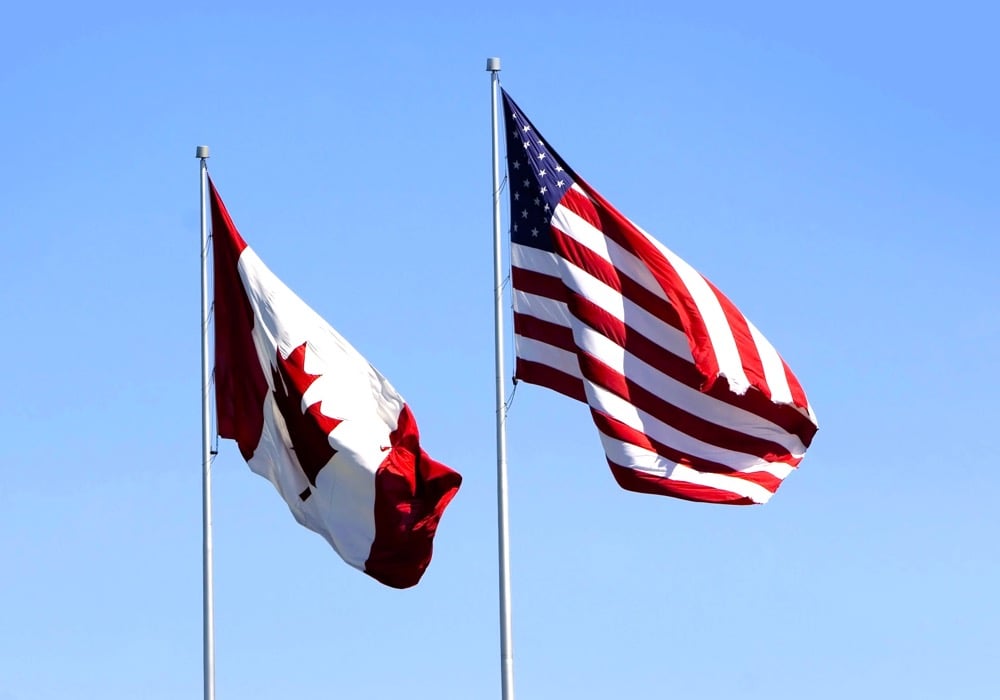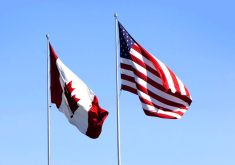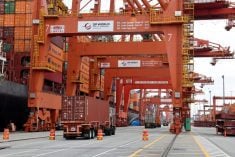PARIS, Sept 24 (Reuters) – Farmers in western Europe are likely to sow less rapeseed for next year’s harvest in response to low market prices and incentives to switch to alternative crops, analysts said.
Benchmark rapeseed prices on the Euronext exchange hit their lowest in more than four years in July during what is estimated to have been a record European Union harvest.
The low prices in the run-up to the rapeseed sowing season in August and September deterred some farmers, who turned instead to crops like peas and beans being promoted under new EU farm subsidy rules.
Read Also

Canadian trade data delayed by U.S. government shutdown
Canadian international trade data for September will be delayed indefinitely due to the ongoing partial shutdown of the United States government, Statistics Canada said Friday, Oct. 24.
Rapeseed is the most produced oilseed crop in the EU and used to make edible oil, biodiesel fuel and animal feed.
The total area sown with rapeseed in the EU could fall five percent compared with this year’s harvest to 15.6 million acres, French consultancy ODA estimates.
In France, the rapeseed area could fall about seven percent to 3.5 million acres, ODA said, putting it below the average of the past five years and also shy of weather-hit sowings for the 2013 harvest.
“At sowing time prices were already low and farmers are trying to spread their risks,” Fabien Lagarde of French oilseed institute Cetiom said.
Farmers could shift some area towards other oilseeds like soybeans or linseed, or to crops such as peas, he said, declining to give an estimate for the drop in rapeseed sowings.
In the northeast, France’s main growing belt, fall-sown rapeseed was generally in reasonable condition. But there was contrasting growth between crops sown in mid-August that have developed quickly and later-sown crops that have been slow to emerge because of dry weather in September, Cetiom said on its website.
MORE BEANS IN BRITAIN
In Germany, which is usually the EU’s largest rapeseed producer ahead of France, sowings were completed in generally good weather, but current low prices mean a small reduction in planted area is expected.
“Overall sowings were undertaken in favourable weather and I do not think there were any serious problems,” one German analyst said. “We do not have any precise figures yet on the likely area, but I would expect a slight fall on the year due to the current low prices in the oilseed sector.”
German farmers had in summer 2014 harvested 3.4 million acres of rapeseed, down 4.4 percent on the year but up 0.2 percent on the average since 2008, Germany’s farm ministry said.
The rapeseed area in Britain is expected to be around one to two percent lower as farmers shift some area to field beans and peas that can count towards ecological focus areas under new EU subsidy rules.
“They (the EU rules) have encouraged some people to switch to field beans,” said analyst Susan Twining of crop consultants ADAS, adding the field bean area may rise 10 to 15 percent.
Low margins for growing rapeseed may also have led some farmers to switch in some cases to spring crops in a bid to tackle problems such as blackgrass weeds that mostly emerge in summer and autumn, analysts said.
British farmers drilled rapeseed within the optimal period of mid-August to mid-September, Twining added.
“The earliest planted crops are up and growing and have established extremely well with good soil moisture and seed beds.”














